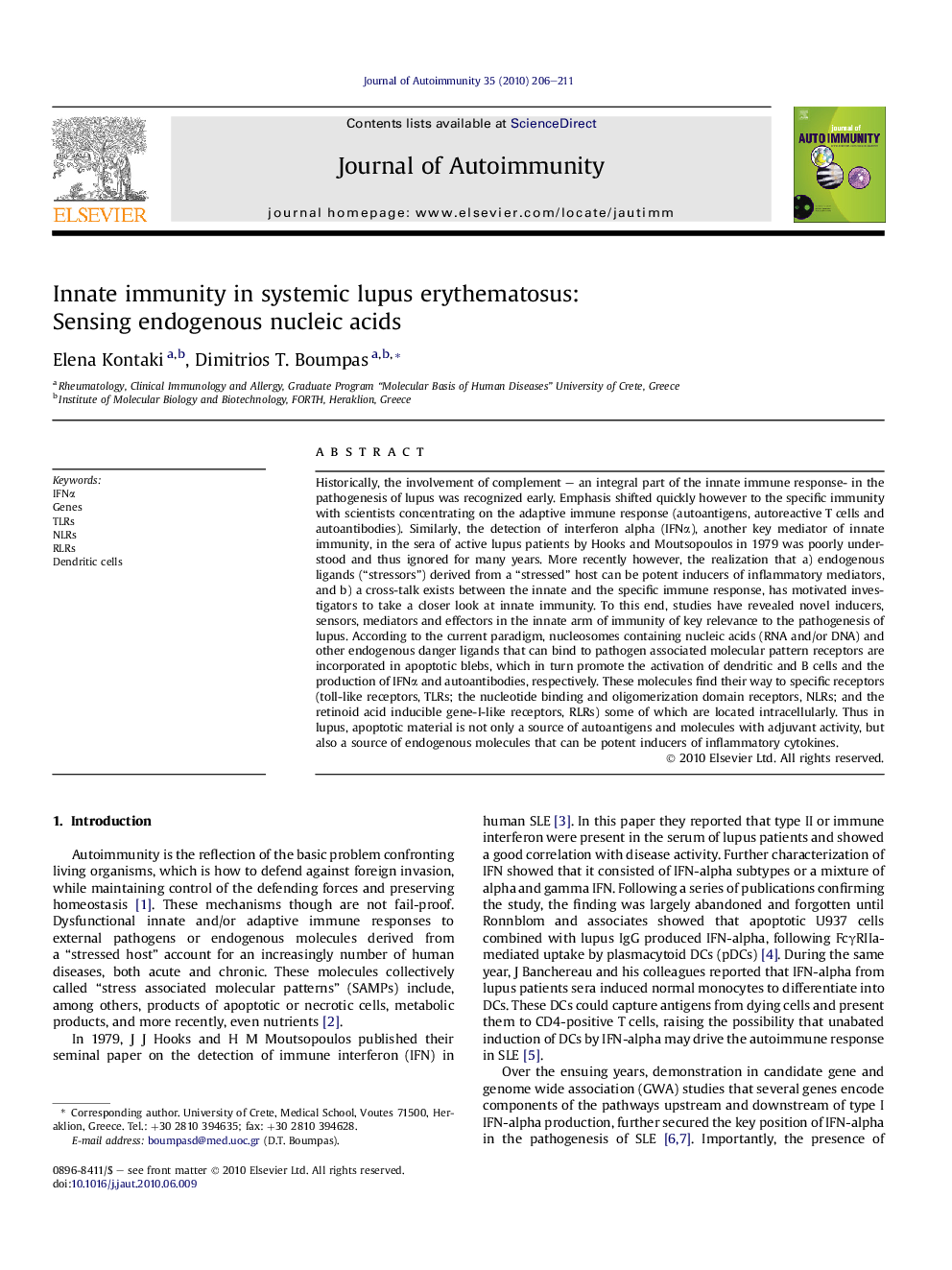| Article ID | Journal | Published Year | Pages | File Type |
|---|---|---|---|---|
| 3368058 | Journal of Autoimmunity | 2010 | 6 Pages |
Historically, the involvement of complement – an integral part of the innate immune response- in the pathogenesis of lupus was recognized early. Emphasis shifted quickly however to the specific immunity with scientists concentrating on the adaptive immune response (autoantigens, autoreactive T cells and autoantibodies). Similarly, the detection of interferon alpha (IFNα), another key mediator of innate immunity, in the sera of active lupus patients by Hooks and Moutsopoulos in 1979 was poorly understood and thus ignored for many years. More recently however, the realization that a) endogenous ligands (“stressors”) derived from a “stressed” host can be potent inducers of inflammatory mediators, and b) a cross-talk exists between the innate and the specific immune response, has motivated investigators to take a closer look at innate immunity. To this end, studies have revealed novel inducers, sensors, mediators and effectors in the innate arm of immunity of key relevance to the pathogenesis of lupus. According to the current paradigm, nucleosomes containing nucleic acids (RNA and/or DNA) and other endogenous danger ligands that can bind to pathogen associated molecular pattern receptors are incorporated in apoptotic blebs, which in turn promote the activation of dendritic and B cells and the production of IFNα and autoantibodies, respectively. These molecules find their way to specific receptors (toll-like receptors, TLRs; the nucleotide binding and oligomerization domain receptors, NLRs; and the retinoid acid inducible gene-I-like receptors, RLRs) some of which are located intracellularly. Thus in lupus, apoptotic material is not only a source of autoantigens and molecules with adjuvant activity, but also a source of endogenous molecules that can be potent inducers of inflammatory cytokines.
